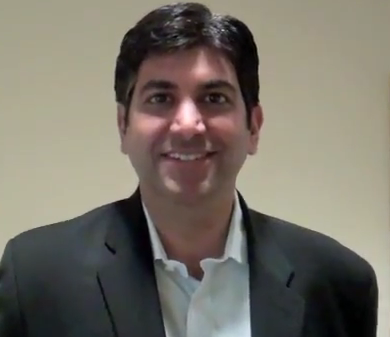EXCLUSIVE POST – Dr. Aneesh Chopra was a keynote speaker at the recent MATRC Summit meeting and spoke of the financial crisis in healthcare and the need for a more value-driven healthcare system:
EXCLUSIVE POST – Dr. Aneesh Chopra was a keynote speaker at the recent MATRC Summit meeting and spoke of the financial crisis in healthcare and the need for a more value-driven healthcare system:
- Our government is broke
- HealthCare is a huge cost driver
- Employers have had enough and don’t want to pay for employee healthcare any more
- Individuals can no longer afford the higher and higher health insurance premiums
- Commercial payers need to align
- Doctors need to look at alternatives as they have less and less time and more and more patients.
- The Accountable Care Organization is geared towards a value-based, quality-driven model
Dr. Chopra expressed the need for increased access to care while increasing quality of care and decreasing costs and believes that mHealth can help achieve this. Examples follow:
Blue Button – A layer of authentication security on top of the internet allows patients in VA hospitals across the US to access and download their health information and share it with their providers. This facilitates transfer of EHRs allowing for a higher quality of patient care.
Cleveland Study – A recent study published in the New England Journal of Medicine comparing diabetic care in a paper environment to care in an EHR environment showed:
“Across all insurance types, EHR sites were associated with significantly higher achievement of care and outcome standards and greater improvement in diabetes care. Results confined to safety-net practices were similar.”
Asthmapolis – A website that tracks asthma patients’ use of their asthma inhalers, thus alerting other asthmatics of problem areas. This results in the avoidance of traveling in these problem areas, fewer asthma attacks and fewer ED visits.
CareClix – Changing the Way You See Your Doctor-Here is their statement on their homepage:
“CareClix is a comprehensive telemedicine solution. The portal provides a fully integrated telehealth solution to connect medical providers and patients worldwide. The system and interaction is HIPAA compliant and is completely confidential, enabling healthcare providers and patients to securely communicate and manage common day medical conditions.
This virtual medical visit seeks to lower the cost of health care, reduce transportation expense, improve access to physicians and specialists, eliminate the need for duplicate lab work and testing, improve the quality of care using advanced technology and knowledgeable well-trained providers, and enhance real-time communication with a medical provider.”
There are many, many more examples than just these few to tell us that mHealth and Telehealth are growing explosively, fueled by a broken healthcare system and unsustainable costs. In the following interview Dr. Chopra names 3 main drivers in the explosion of mHealth:
- Release of data by the US government
- Creation of Electronic Health Records
- Shift in HC payment to a value-based model
Listen to the interview and be encouraged. There is hope for a new future in HealthCare.
Transcript of video (done by TranscriptionStar)
Aneesh: Good afternoon.
Joan: Good afternoon. I’m Joan Justice from HealthWorks Collective, and I’m here with Aneesh Chopra, and Aneesh you just gave a talk at the Mid-Atlantic Telehealth Conference about the future of mHealth, and the Accountable Care World.
Aneesh: Yes indeed.
Joan: So why the explosion in mHealth?
Aneesh: Well, the explosion in mHealth is because the country is facing a bit of challenge, but it’s an opportunity. We have to find a way to bend that healthcare cost curve and improve our healthcare outcomes at the same time. We have a high confidence that we can accomplish both of these tasks and the set of initiatives we’ve taken in Washington and communities around the country are creating the kindling and need to set a fire a new move if you will, a movement around health innovation, and what we’re seeing is mHealth is an important component of that.
So what are we talking about? We’re talking about three basic things. One, we have decided to open up government data around health so the country can get smarter about the outcomes that we’re needing to see in pockets of the country that have done well, and those that have struggled how do you learn because you’ve got the data now to say what happened in one community that I can bring together.
The powering up the information from the government is a way to inspire folks to see where the opportunities lie is bedrock principle number one. Number two, we’re seeing an opportunity unlike any other as doctors adopt Electronic Health Records. We’re seeing a doubling of the number of office based physicians that have adopted EHRs. This is a growth curve in the large part because the President put forward a pretty bold and audacious plan under the Recovery Act to provide meaningful use incentives to physicians.
They are taking them up on that incentive program and we’re seeing once digitized the opportunity to share information back with patients, and to referring doctors and to public health agencies. And third, we’re seeing a transformation how care is paid for. You’re seeing this in the Medicare innovation center. Thanks to the Affordable Care Act which is now providing doctors, hospitals and combinations of the two, resources to help manage patients better, lowering cost, improving quality and sharing in the upside for having delivered on some of those efficiencies.
These three forces the opening up of health data, the adoption and the digitization of medical practices, and the incentives that are now shifting towards value-based pick, payment that created conditions for a new portfolio of products and services much of whom are what you would need in health as a way to extend the practice to communicate better with patients and to ensure that the healthcare system delivers on it’s promise for a value [indiscernible] future.

